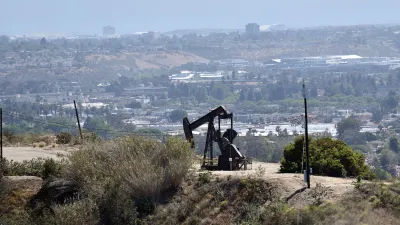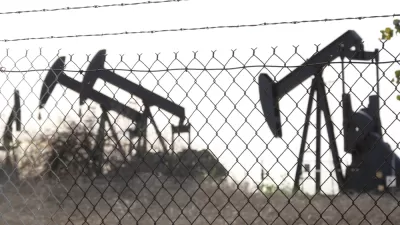Hundreds of thousands of defunct oil wells litter the state, leaking dangerous substances and often hidden under parking lots, buildings, or covered over by vegetation.

Pennsylvania is expecting to receive $400 million in federal funding aimed at plugging the state’s roughly 250,000 defunct oil wells, which can pose serious health risks to surrounding communities. Writing for Inside Climate News, Stacey Burling describes the state of the state’s hundreds of thousands of abandoned wells.
Abandoned wells can contaminate surrounding groundwater and soil with carcinogens and release harmful gases into the air. “One of the known risks of abandoned wells, many of which were drilled before there were good regulations or records, is that fracking fluid can find an underground path to them and then spew to the surface. The wells, which often just look like pipes sticking from the ground, also can release methane, a potent greenhouse gas, and other chemicals that can be harmful to people, plants, and wildlife.”
With many of the state’s wells “drilled in remote locations in an era when no one was required to report where they were,” the state has essentially lost track of thousands of abandoned wells. “More dangerously, some are now under parking lots or buildings. Some may just look like small depressions in the ground.” For many of them, “government is the only hope for plugging the oldest wells, because the original drillers are long gone, or more recent owners have gone bankrupt.”
FULL STORY: Pennsylvania Expects $400 Million in Infrastructure Funds to Begin Plugging Thousands of Abandoned Oil Wells

Alabama: Trump Terminates Settlements for Black Communities Harmed By Raw Sewage
Trump deemed the landmark civil rights agreement “illegal DEI and environmental justice policy.”

Planetizen Federal Action Tracker
A weekly monitor of how Trump’s orders and actions are impacting planners and planning in America.

Why Should We Subsidize Public Transportation?
Many public transit agencies face financial stress due to rising costs, declining fare revenue, and declining subsidies. Transit advocates must provide a strong business case for increasing public transit funding.

Understanding Road Diets
An explainer from Momentum highlights the advantages of reducing vehicle lanes in favor of more bike, transit, and pedestrian infrastructure.

New California Law Regulates Warehouse Pollution
A new law tightens building and emissions regulations for large distribution warehouses to mitigate air pollution and traffic in surrounding communities.

Phoenix Announces Opening Date for Light Rail Extension
The South Central extension will connect South Phoenix to downtown and other major hubs starting on June 7.
Urban Design for Planners 1: Software Tools
This six-course series explores essential urban design concepts using open source software and equips planners with the tools they need to participate fully in the urban design process.
Planning for Universal Design
Learn the tools for implementing Universal Design in planning regulations.
Caltrans
Smith Gee Studio
Institute for Housing and Urban Development Studies (IHS)
City of Grandview
Harvard GSD Executive Education
Toledo-Lucas County Plan Commissions
Salt Lake City
NYU Wagner Graduate School of Public Service





























